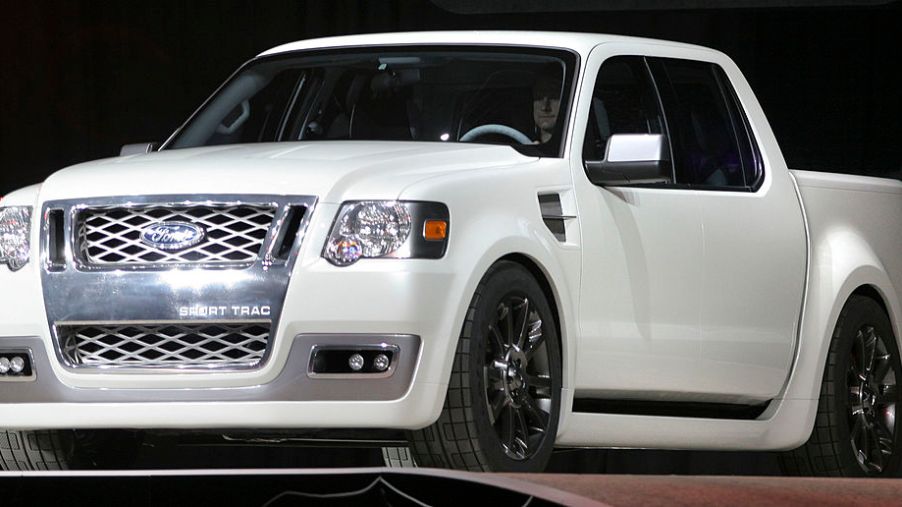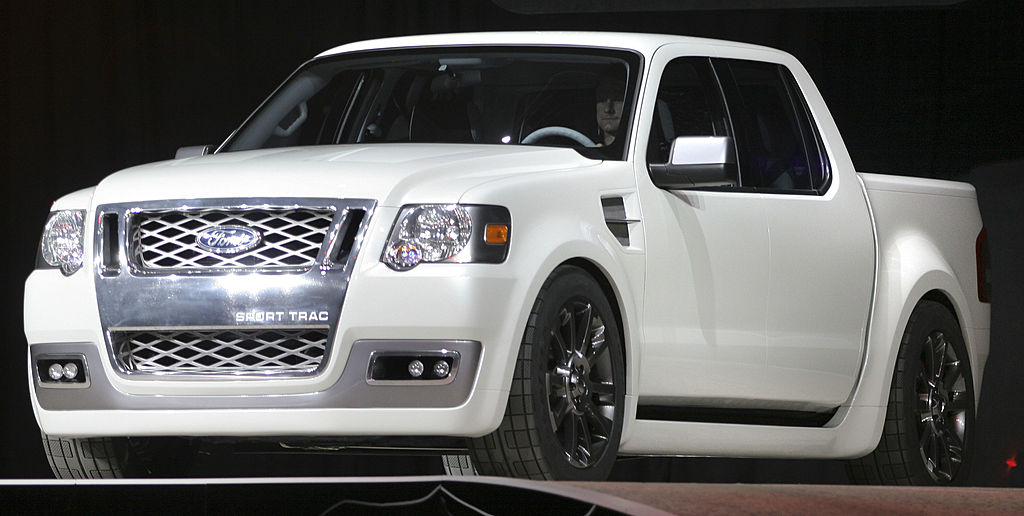
The Ranger Isn’t Ford’s First Midsize Truck
The more recent Ford fans may be in love with their F-150s and Rangers, but not that long ago, Ford wasn’t selling the Ranger in the U.S. In fact, in the midsize pickup truck segment, Ford offered a truck based on the Explorer SUV instead. This truck was the appropriately named Explorer Sport Trac.
What was the Explorer Sport Trac?

The idea behind the Ford Explorer Sport Trac was simple. Ford wanted to take two things that worked and mix them together. It was developed in the early 2000s, and in those years, many automakers were experimenting with similar ideas. Dodge, for example, thought that it’d be a good idea to combine a convertible with a pickup truck.
Ford’s idea was less weird. Ford wanted to combine the cozy and comfortable interior of the Explorer SUV with the capabilities and practicality of a pickup truck. The result, according to EveryAuto, was an Explorer that had a truck bed attached to its back.
The Explorer Sport Trac had two generations. The first one was produced between 2000 and 2005. The second one was produced between 2006 to 2010. After the 2010 model year, Ford discontinued the ambitious model.
What this SUV/pickup hybrid could do
As EveryAuto said, the first generation of the Explorer Sport Trac wasn’t very impressive. NADA Guides says that the first generation had only one engine option, a 4.0-liter V6 engine that generated 210 hp and 254 lb-ft of torque.
Off the bat, its only engine option was simply too weak for a truck. NADA Guides noted that this generation of the Explorer Sport Trac has a payload capacity of 1,500 lbs and its towing capacity was only 5,000 lbs. On top of that, EveryAuto mentioned that it was very low-tech and that it had handling problems.
For the second generation of the Explorer Sport Trac, Ford improved pretty much every aspect of it. EveryAuto said that its handling, its interior, and its power were some of the biggest improvements that Ford made. In particular, Ford now offered a 4.6-liter V8 engine that generated 292 hp and 300 lb-ft of torque.
This V8 engine allowed this SUV/truck hybrid to handle a similar amount of payload but increased its towing capacity to about 6,800 lbs. Furthermore, Ford improved the technology inside in its later model years. It’s not an advanced truck by any means, but it was definitely better equipped than the first generation was.
Why the Ford Ranger replaced it
Obviously, when any vehicle model gets cancelled, it’s almost always because it didn’t sell enough. The Ford Explorer Sport Trac, in part due to its weak first generation, never really became popular enough to warrant more generations of the truck.
Additionally, when Ford redesigned the Explorer in 2011, Ford decided to just stop trying to make an SUV/truck hybrid happen. Instead, Ford decided to have the Ranger take the place of the Explorer Sport Trac. There are a lot of similarities between these two models, but the biggest difference is the fact that the Ranger isn’t based off of the Explorer’s design anymore.
Instead, with the Ranger, Ford is free to design a dedicated midsize truck. This importantly means that Ford will pay attention to what truck lovers want from their midsized trucks, which didn’t seem to be something that Ford considered in the early years of the Explorer Sport Trac. As a result, the Ranger is probably a better midsize truck to own than the Explorer Sport Trac ever was.



